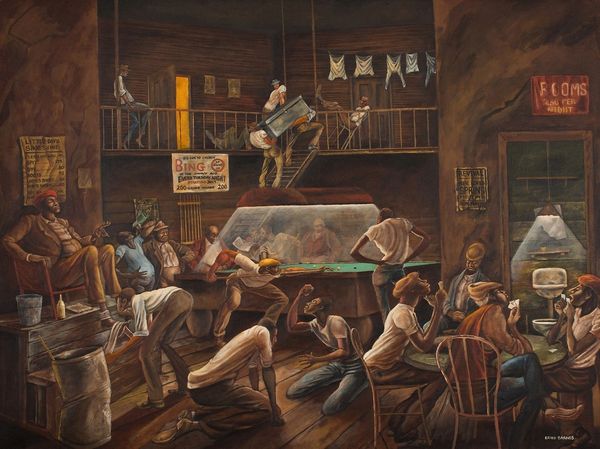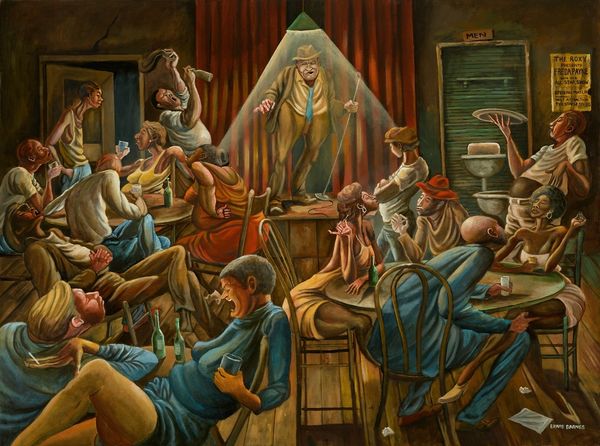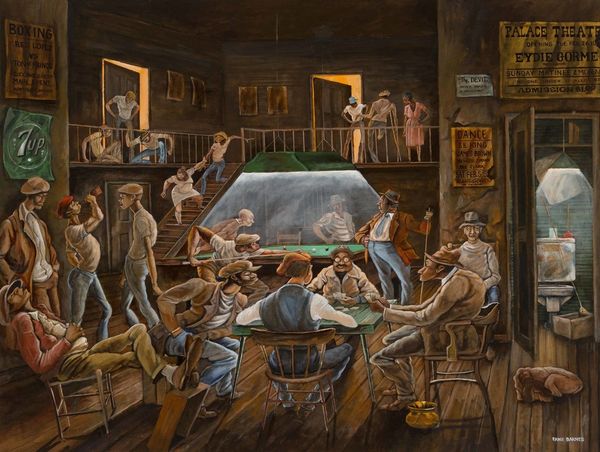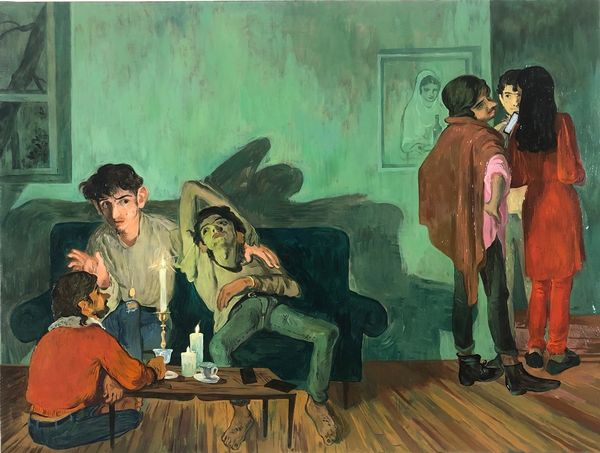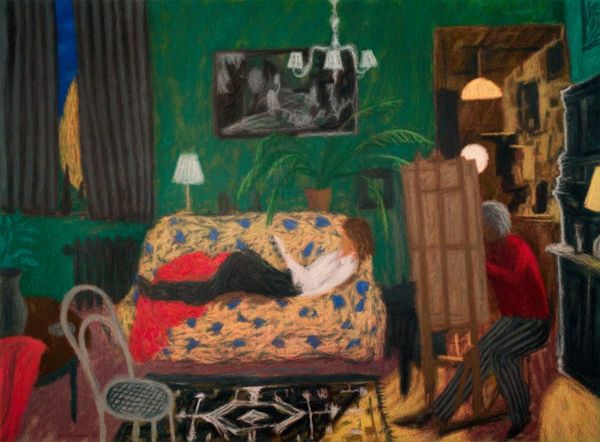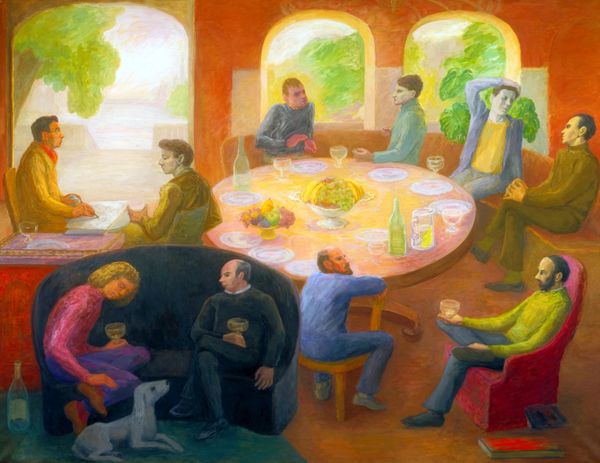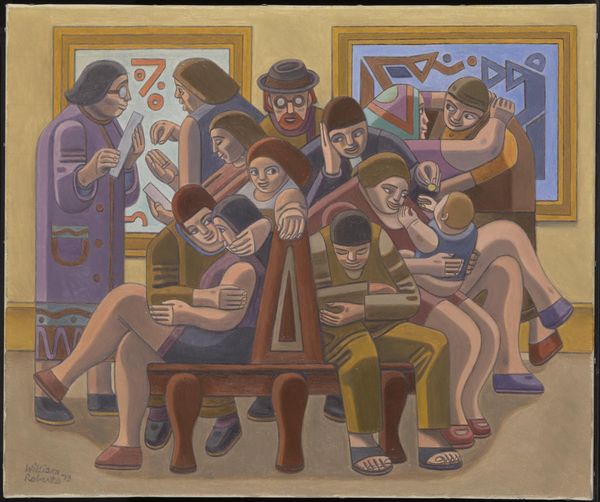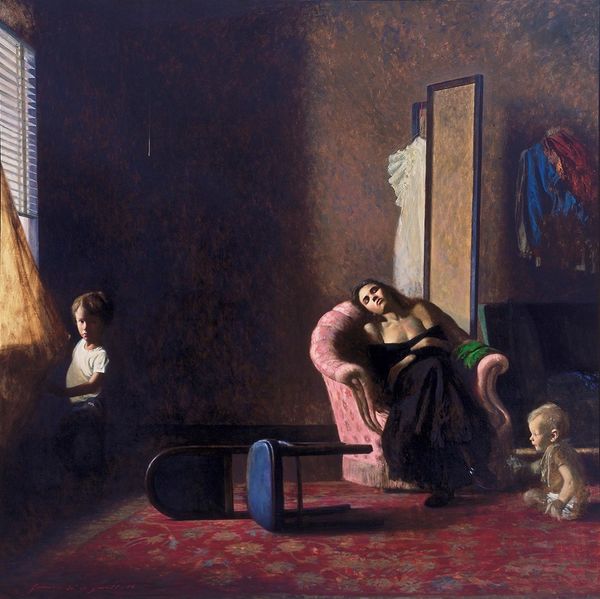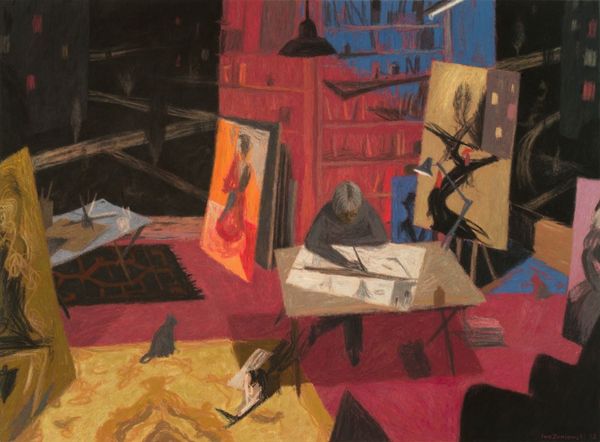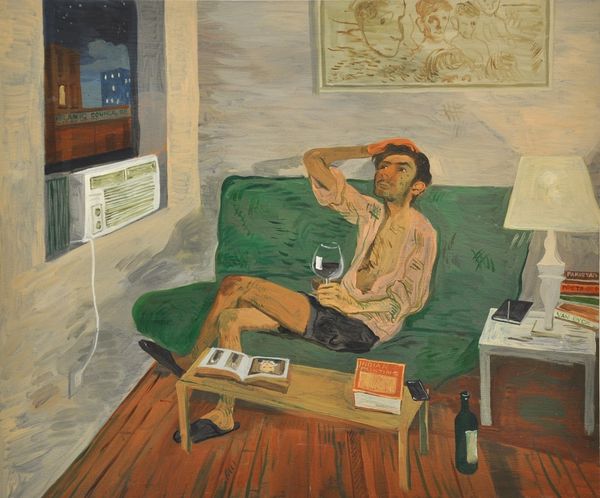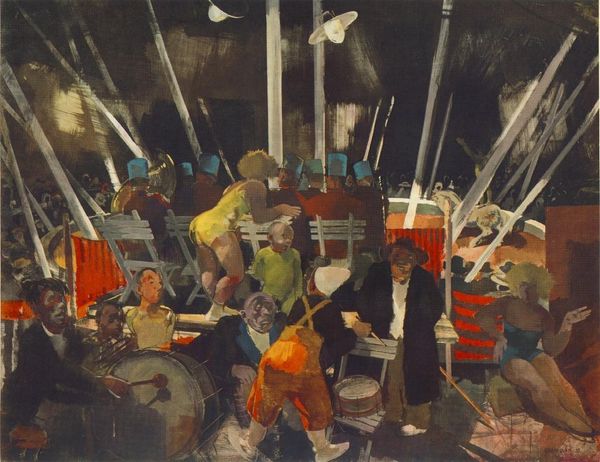
Copyright: Neo Rauch,Fair Use
Neo Rauch made this unsettling diptych, titled 'Die Stickerin', in Germany, but we don't have the exact date. The theatrical composition recalls the aesthetics of Socialist Realism, a style once promoted by state-funded institutions across the Soviet Union and Eastern Europe. The figures in 'Die Stickerin' are shrouded in a dark and ambiguous atmosphere. A group of individuals, including bare chested men, appear to be manufacturing or manipulating bolts of yellow fabric. The scene evokes a sense of collective labor, but also hints at a clandestine or perhaps even absurd activity. Rauch came of age in East Germany. Much of his artistic style is informed by the social conditions and institutional histories of the region. His works invite us to question the power dynamics inherent in the production and reception of art. What were the social forces that shaped its creation? What do the visual codes, cultural references, and historical associations mean? These are just some of the questions that we, as historians, can ask.
Comments
No comments
Be the first to comment and join the conversation on the ultimate creative platform.
